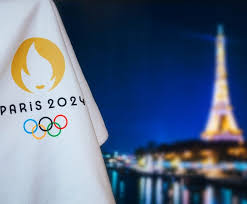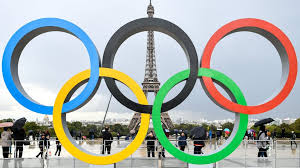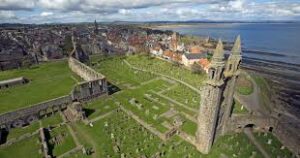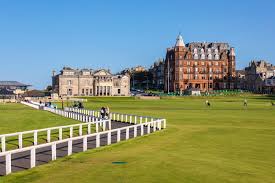History is written by the victors, the saying goes, and upon visiting St. Andrews, one learns that golfing history is no different. As far back as 1691, St Andrews, in the Fife region of Scotland, has been credited as the birthplace of golf. Coming off the Paris 2024 summer Olympics, where the game has now returned to the Olympiad, revisiting the origins are now more important than ever.
USA Golf Board Chair John Bodenhamer, speaking exclusively to RG.org, discussed just how much the Paris games widened the sport’s audience.
“International exposure happens all year long through Tour events and worldwide amateur competitions, where golfers from around the globe compete together,” Bodenhamer said.
“Golf in the Olympics only supercharges that.”
Indeed golf has come a very long way since the 1400s, when there were two very different types of golf being played
One form was for the “commoners” (or plebeians, peasants, different societies have had many names for this elitist concept) and it was actually played in city streets. This naturally led to building damage and personal injury. One man was actually killed, upon being struck by a golf ball, in Kelso, Scotland, in 1632!
The second form of golf was played by the nobles (patricians, manor born etc.) and this took place in the more wide open rural spaces. Obviously, you know which form of golfing eventually won out. Common sense prevailed as the safer form took hold.
Scotland then established and innovated golf, but there were “ball and stick games” being played, all over the world, well before the 1400s. The British Golf Museum at St. Andrews, where one acquires this knowledge, is a must stop for any sports scholar.
When you think of golf these days, you might think of country clubs, where well-to-do, conservative people enforce strict rules.
Believe it or not, the sport was once considered avant-garde, taboo and rebellious. In fact, the first written mention of the world golf came in 1457, when King James II tried to ban the game. They failed, but future Jacobite (“Jacob” is Latin for “James”) administrations and parliaments again tried to ban the sport in 1471 and 1490.
If you were named King James (no, not Lebron), then you tried to make golf illegal for various grounds. The rationale was that the sport distracted from attending church services and/or training for military service.
You can’t be golfing, you need to be practicing your archery skills! For the good of this Earth, this realm, this England! Eventually, things changed among the royals.
King James V, Mary Queen of Scots, Charles I and Bonnie Prince Charlie were some of the many members of the royalty class that were all keen on the game. In the 1800s the rules established at St. Andrews became the rules that every golfer must abide by. Consider St. Andrews the predecessor to the IOC (International Olympic Committee) in that regard.
Now this is the game that we all know and love today, and you can see that when visiting the caddy shack at St Andrews, which sits on a very picturesque North Sea beach. In keeping with the Olympic theme, these West Sands also happen to be where the iconic “Chariots of Fire” scene was filmed.
In 1897, the Royal and Ancient Golf Club of St Andrews would formally become the governing body for the rules of golf.
The charmingly tiny and quaint coastline town of St. Andrews has six different golf courses today, but there’s so much more to see here than just golf. It’s all walkable too, so you don’t need that much time to see it all.
The town of St. Andrews boasts the remnants of an old Medieval castle overlooking the seas, a beautiful and historic university, as well as the ruins of an old cathedral that also resides on the North Sea coast.
St. Andrew’s University boasts many firsts. It is the oldest school in Scotland, and it admitted the first female college student in the British Isles in 1862
They also created the first student union, as well as the first marine lab.
Paul M. Banks is the Founding Editor of The Sports Bank. He’s also the author of “Transatlantic Passage: How the English Premier League Redefined Soccer in America,” and “No, I Can’t Get You Free Tickets: Lessons Learned From a Life in the Sports Media Industry.”
He currently contributes to Ravens Wire, part of the USA Today SMG’s NFL Wire Network and the Internet Baseball Writers Association of America. His past bylines include the New York Daily News, Sports Illustrated, Chicago Tribune and the Washington Times. You can follow him on Linked In and Twitter.








